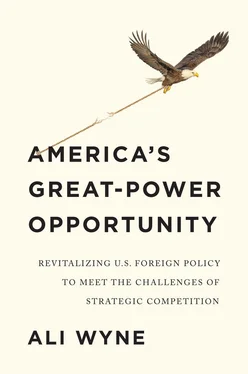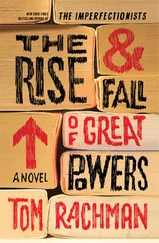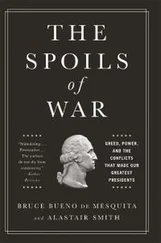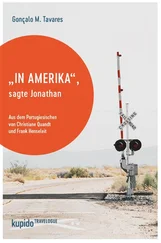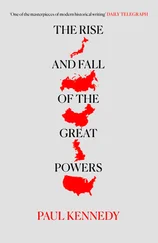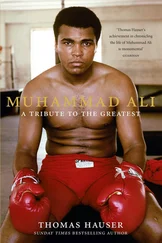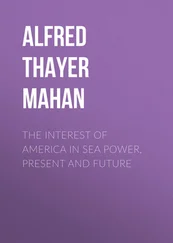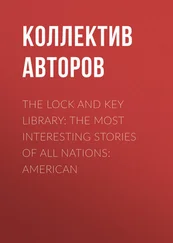It could lull the United States into an increasingly expansive, yet poorly specified struggle against two formidable powers, undermining America’s sense of strategic balance and unnerving its allies and partners: these countries have little desire to be instrumentalized in the service of a reactive US foreign policy, however potent their apprehensions about China and Russia may be.
It could elicit defensive, even alarmist US responses to Beijing and Moscow, accelerating Sino-Russian rapprochement in the process.
Given that transnational challenges increasingly shape geopolitics, such a policy could undercut the United States’ vital national interests if it sets the United States on a path of permanent antagonism with China and Russia.
While Washington will increasingly have to contend with and manage the challenges posed by a resurgent Beijing and a revanchist Moscow, it should not pursue a foreign policy that is driven by or beholden to their actions. It should instead articulate a forward-looking conception of its role in the world, identifying cases where circumscribed competition with China and Russia might further that vision. Near the end of his famed “long telegram,” Kennan exhorted the United States to “formulate and put forward for other nations a much more positive and constructive picture of [the] sort of world we would like to see than we have put forward in [the] past … And unless we do, [the] Russians certainly will.” 59
The second part of his judgment may not obtain to the same extent as it did during the Cold War. Russia’s vision—to be recognized as a great power within a system it hopes will continue to grow more multipolar—does not rouse individuals across the developing world in the way the Soviet Union’s appeals to the proletariat did. China’s vision, meanwhile, traffics in underspecified abstractions—“a community of common destiny for mankind,” for example—that have acquired a more ominous dimension as the country’s aggregate power has grown and its abandonment of foreign policy restraint has become more apparent. What both Beijing and Moscow can do, though, even if they lack compelling alternative visions of their own, is to highlight the weaknesses of the present order, which COVID-19 has amply displayed. They can also, disingenuously yet potently, adduce the convulsions now roiling US domestic politics as evidence that the United States is unfit to govern itself, let alone lead others. The more traction such critiques gain globally, the harder it will be for the United States to marshal either the internal or the external support it will require to pursue a sustainable foreign policy.
It remains critical, then, according to the first part of Kennan’s judgment, for the United States to offer an affirmative vision that can elicit enduring support from the American public as well as from its longstanding allies and partners. A starting point for constructing that vision is the recognition that, despite renewed concern over the prospect of deglobalization, transnational challenges are increasingly likely to define our future, be they climate change, pandemic disease, or macroeconomic instability. With tragic irony, COVID-19 may leave the world less prepared to manage such challenges, for it has reduced the agency of core international institutions, amplified nationalistic sentiments, and, perhaps most concerningly, undercut the willingness of great powers to cooperate with one another: transnational challenges are increasingly exacerbating a competition that renders their mitigation less likely.
The more the demand for collective action outstrips the supply of it, the greater the strategic return on investment will be for actors that transcend parochial impulses and undertake to narrow that gap. Henry Farrell and Abraham Newman argue that “a retreat from globalization would make generosity an even more powerful tool of influence for states that can afford it.” 60Two kinds of mobilization must occur in parallel among governments, corporations, philanthropies, advocacy organizations, and other stakeholders in today’s geopolitics: short-term, emergency mobilizations to contain crises when they arise; and long-term, patient mobilizations to boost collective resilience against transnational challenges.
The United States is one of the countries that are best positioned to play the role of chief galvanizer. It has the world’s largest economy, accounting for roughly a quarter of gross world product (GWP). The US dollar remains the sole reserve currency, and its position has endured despite concerns that the global financial crisis and America’s initial mismanagement of the pandemic would prompt widespread dedollarization. Washington has a network of alliances and partnerships that, while under considerable strain, remains unrivaled. And, whether one considers the fight against Ebola in 2014 or the Marshall Plan that facilitated postwar Europe’s resuscitation, the United States has a longstanding record of forging coalitions to contain emergencies and build capacity.
It cannot assume, however, that it will automatically be entrusted to serve as the world’s principal mobilizer. The Trump administration’s foreign policy strained well-established US alliances and partnerships and, if “America First” proclivities manage to have an enduring impact on the United States’ strategic outlook, Washington’s friends may be reluctant to make commitments to it, or maybe even to join it in common undertakings. The United States will have to work hard over multiple administrations to demonstrate that it has resumed a more traditional approach to international institutions and multilateral agreements. It will also have to inspire greater confidence in its ability to stay economically competitive and technologically innovative over the long haul, especially vis-à-vis China. The challenge Beijing poses to Washington’s diplomatic network—a network that is essential to the latter’s ability to mobilize collective action—lies less in ideological allure than in commercial pull: if, through actual performance and the accompanying rhetoric, China can persuade the United States’ allies and partners that it is inexorably resurgent, they may decide to rebalance eastward over time.
Now, if the United States is to reemerge as the focal point for collective action, external repositioning will not suffice; it will have to come alongside domestic revitalization. Samuel Huntington once observed that “[t]he ultimate test of a great power is its ability to renew its power.” 61Although the United States has marshaled that regenerative capacity time and again, Michèle Flournoy cautions that one of its “biggest risks is assuming that our advantages are inherent as opposed to something we have to work for to sustain.” 62In addition, while Washington remains the lone superpower, it would be remiss to presume that the rest of the world will wait for, or proceed from, its directives as to how to construct a more resilient post-pandemic order. On the contrary, the initial phase of America’s response to COVID-19 heightened the urgency other countries felt to coordinate among themselves:
Countries in Europe and Asia are forging new bonds on issues like public health and trade, planning for a future built on what they see as the pandemic’s biggest lessons: that the risks of China’s authoritarian government can no longer be denied, and that the United States cannot be relied on to lead when it’s struggling to keep people alive and working, and its foreign policy is increasingly “America first.” 63
Despite having just over 4 percent of the world’s population, the United States accounts for roughly 18 percent of global COVID-19 infections and 14 percent of fatalities. 64
The good news is that significant progress has been made: by the time this book was completed, 60 percent of the US population was fully vaccinated and 72 percent of Americans had received at least one dose. 65There still are, of course, many causes for concern. A Delta variant that could be twice as transmissible as the original strain is surging among unvaccinated Americans, many of whom are likely to continue resisting vaccination. There have been a few breakthrough infections in which fully vaccinated individuals have nonetheless managed to contract the virus. And, as epidemiologists are unsure how long fully vaccinated Americans will remain protected, the Biden administration initiated a booster shot program in September 2021. On balance, though, the United States is in a substantially better place than it was just a year before. At the same time, a growing body of evidence suggests that Chinese vaccines are substantially less efficacious than Pfizer, Moderna, and AstraZeneca. Given that just 7 percent of individuals in low-income countries have been partially inoculated, the United States has an extraordinary opportunity—and obligation—to help the rest of the world recover (it has purchased 1.41 billion vaccine doses). 66It also has a profound interest in doing so; the longer COVID-19 persists, the more likely it is that new variants will emerge against which current vaccines offer less protection, or even none. 67
Читать дальше
